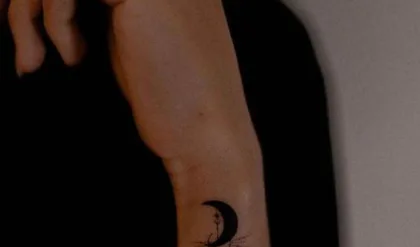Human sacrifice has been around for centuries – the Mayas, Aztecs, and ancient Egyptians killed prisoners of war, volunteers, and slaves over the course of their rich histories. But child sacrifices, especially mass killings, are incredibly rare.
The Chimu people performed rituals that revolved around the revered outer world.

Ruíns of Chan Chan, the capital of the Chimú Empire, sit nearby the modern-day town of Huanchaco. In 2011, a local pizza shop owner told Gabriel Prieto, a professor of archaeology from the National University of Trujillo, to check out a nearby vacant lot full of human bones.
Kristin Romey, archaeological editor for National Geographic and author of the magazine’s exclusive article on the Chimú findings, told Business Insider that Prieto assumed the shop owner had found a forgotten cemetery.
But once Prieto started digging, he realized the bodies were all children, and all 500 years old. Llamas were also unearthed too.
Then it came to light that they had all been systematically killed.
Since then, Huanchaquito-Las Llamas, or Las Llamas for short, has been a hub of activity for archaeologists. “As the excavation seasons progressed, the number of victims was just staggering – no one had ever seen anything like it before,” Romey said.
More burials were uncovered on a nearby site in the summer of 2018. The second site, named Pampa la Cruz, yielded more children and llamas to add to the total. The running tally is 269 child sacrifices, 466 llamas, and 3 adults. It’s the largest mass child sacrifice to date in the archaeological record.

In an archaeological saga that began in 2011 and will likely continue in the years to come, experts have tried to understand the what prompted this mass child sacrifice.
Take a look at some photos in the February 2019 issue of National Geographic from the excavation sites, which could help archaeologists shed light on what happened that fateful day some 550 years ago.
Peru, along with John Verano of Tulane University led the excavation of both sites. Together, their team confirmed that some 550 years ago, during the twilight of the Chimú Empire, this ancient ceremonial site ruthlessly killed their children.
Many of the children— all between ages 5 and 14— had faces smeared with a red pigment. Their chests were often cut open, ribs dislocated, and their hearts were likely removed. The sacrificial llamas that accompanied them met the same grisly fate.
Child sacrifice in the archaeological record is rare because it doesn’t make a lot of economic sense, Romey said.
“For most of human history, making it past the age of or five was a big thing. It took a lot of effort and luck. So why would a society wipe out a part of their population that they had already spent so much resources on to just survive past birth, only to get rid of them before they were out of childhood, before they were able to work, fight, or reproduce?”
Sacrificing Young Llamas Was Similarly Costly, As The Animals Provided The Chimú With Food, Transportation, And Wool.

“Why cull a herd so young?” Romey wondered.
The llamas were all 18 months old, bred for the Andes to the east. Only brown or light brown llamas were culled. Black and white llamas were spared, it seems.





